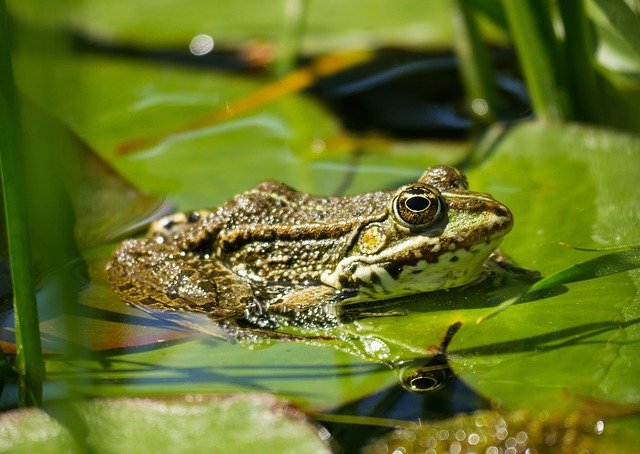
Frogs and toads are amphibious animals.
From the Latin amphibĭus , the term amphibian allows us to name the animal that can live both on land and submerged in water . Toads and frogs , for example, are amphibious animals since, when young, they have gills and live in water; However, as adults, they develop lungs and begin to live on land.
Amphibians belong to the class of anamniote , tetrapod and ectothermic vertebrates , with gill respiration in the larval period and lung respiration in adulthood. This metamorphosis that they experience over time allowed amphibians to be the first vertebrates that managed to adapt to a semi-terrestrial life.
In addition to the aforementioned development of lung respiration, changes include the appearance of limbs and sensory organs that function in both environments.
amphibian species
Currently, scientists estimate that there are some 6,347 species of amphibians that are divided into 60 families . Orders can be mentioned such as the anurans (which lack a tail, have unequal limbs and a vertebral column adapted to jumping), the caudates (with equal limbs and a tail) and the gymnofiones (also known as caecilians or apodes, they are burrowing animals that do not have paws).
When determining a classification of amphibians we find a wide typology of them. However, among the most prominent groups are the so-called apodes, which are those that are defined by the fact that they do not have legs, which means that their way of moving and moving is by dragging their body. A clear example of this type of animal would be, for example, the caecilian, which is a species of worm that lives in underground areas without light.

An amphibious vehicle can generally travel on land and in water.
The urodeles
Another of the most important groups within amphibians is what is called urodeles. Within it are those animals that are characterized because they have a visible tail, their eyes are not very developed and they have a very elongated trunk and limbs.
Among the main examples that we can give of urodeles we would find salamanders. Harmless to humans are these that are identified because they live in humid areas, they have a tail and four legs, there are eight different families of them and they have a body where the yellow and orange colors take center stage.
However, other living beings included in this group would be the newts, which have a yellow belly and black circular spots and are known for the fact that when it comes to reproducing, they do so through a unique dance by the male. Proteans and mermaids are other amphibians that are also included in the aforementioned group of urodeles.
Other uses of the notion of amphibian
The notion of amphibian (which means “in both environments” or “both lives” ) also allows reference to plants that can grow in or out of water and to vehicles that can function in water, on land or in the air.
Military maneuvers that are carried out jointly between land, sea and air forces , finally, are mentioned as amphibious.
